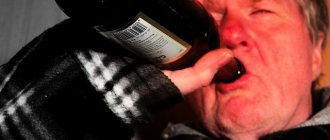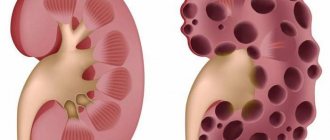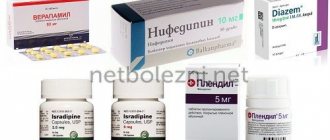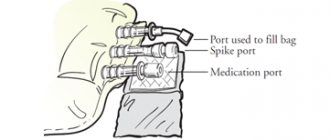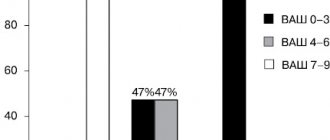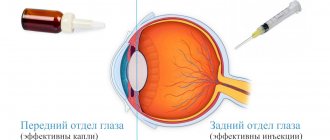Compound
One Lidevin tablet contains 300 mcg of nicotinamide or vitamin B3 , 500 mcg of adenine or vitamin B4 , and 500 mg of the active compound disulfiram .
As auxiliary compounds, the drug contains: povidone, magnesium stearate, sodium carboxymethylcellulose, as well as microcrystalline cellulose.
Pharmacodynamics and pharmacokinetics
This combination drug, containing B vitamins , as well as disulfiram is actively used in the treatment of alcohol and drug addiction . Since disulfiram is an inhibitor of the liver enzyme acetaldehyde dehydrogenase , Lidevin can act on it, namely block it in order to increase the production of acetaldehyde , which, in turn, is a metabolite of ethyl alcohol .
Due to the effects of acetaldehyde, the drug causes an unpleasant reaction and negative sensations in patients when drinking alcohol, which can be expressed in the form of sudden flushes of blood to the face, vomiting, tachycardia, decreased blood pressure, and nausea. As a result, a person develops a conditioned reflex aversion to the smell and, especially, the taste of alcoholic beverages.
Already 12 hours after taking Lidevin, the maximum effect of the drug is achieved, which continues for another 14 days after the course of therapeutic treatment. It is worth especially emphasizing that the active compound disulfiram in combination with B quite effectively fights alcoholism .
It is also noteworthy that the pronounced clinical effect of the drug is noticeable even when consuming very small doses of alcoholic beverages. In comparison with similar drugs, Lidevin stands out due to its relatively small number of contraindications and side effects. The drug is used not only during treatment, but also in the prevention of hypovitaminosis , as well as neuropathy due to alcoholism.
Story
The fight against drunkenness has been going on for a long time, and various methods of getting rid of this disease are used. In folk medicine, herbal infusions were often used that cause an aversion to alcohol.
In 1946, an interesting event occurred in Europe: workers working in a rubber vulcanization shop noticed that they could not drink beer after working a shift. The reason was a substance called tetraethylthiuram disulfide, which served as the starting point for the creation of disulfiram.
The appearance of such drugs formed the basis of the method of prohibitive therapy, and became widespread in all countries of the Soviet Union. Nowadays, the drugs developed then are still used, but new drugs have also appeared, which we will discuss later.
Contraindications
The drug has the following absolute contraindications:
- hypersensitivity;
- diseases of the organs of vision and hearing , for example, neuritis or glaucoma;
- emphysema;
- tuberculosis;
- diabetes;
- severe forms of cardiovascular diseases ;
- epilepsy;
- bronchial asthma;
- exacerbation of stomach ulcers ;
- polyneuritis;
- pregnancy;
- duodenal ulcer , in the acute stage;
- liver failure;
- oncological diseases;
- thyrotoxicosis.
With extreme caution, the drug is allowed to be used in cases of acute medical need and under the supervision of doctors during remission of a peptic ulcer , after psychosis and circulatory disorders , as well as in old age and in the stage of compensation for diseases of the cardiovascular system.
When should you not use alcohol aversives?
Medicines containing disulfiram should not be used if:
severe renal/liver failure;- diabetes mellitus;
- convulsive seizures;
- individual intolerance to the compound;
- pregnancy, breastfeeding.
They are used with caution in hypothyroidism.
Among the side effects:
unpleasant taste of metal in the mouth;- difficulty remembering new information;
- the appearance of sores and itchy spots on the skin;
- respiratory failure;
- inflammation of the mucous membranes of the gastrointestinal tract;
- myocardial infarction;
- accumulation of fluid in brain tissue.
Improper dosing of the drug can lead to depression of consciousness, even coma, dangerous neurological complications, and cardiovascular collapse. Therefore, an experienced narcologist should determine the permissible therapeutic dose.
If the patient drank during disulfiram therapy, it is necessary to carry out detoxification and combined symptomatic treatment.
Need some advice?
OR CALL A DOCTOR
CALL!
+7
Side effects
During treatment, Lidevin can cause such adverse reactions as:
- headache;
- hepatitis;
- confusion;
- angina pectoris;
- arrhythmia;
- unpleasant metallic taste in the mouth;
- asthenia;
- allergic reactions;
- neuritis;
- thrombosis;
- cerebral edema;
- collapse;
- convulsions;
- polyneuritis.
Medicines based on Naltrexone
Among them, the most commonly used are: Prodetoxone, Vivitrol and others.
Coding medications containing Naltrexone have not been used for very long, but are highly effective and safer. They do not cause euphoria or other signs of intoxication; they act gradually, reducing the desire for alcohol. They have virtually no adverse reactions. Sometimes when combined with ethanol, manifestations such as:
- anxiety;
- abdominal pain;
- insomnia;
- tremor in the limbs.
The main disadvantage is the short validity period. When administered intravenously, they last only a month, after which re-coding is required. If implantation is used in the form of tablets or capsules, the validity period is six months.
Instructions for use of Lidevin (Method and dosage)
In accordance with the instructions for use of Lidevin, tablets are taken strictly 24 hours after the last drink. The recommended dose of the drug is 125-500 mg.
After a maximum of 10 days, medical workers take a disulfiram-alcohol sample from the patient, the results of which determine the effectiveness of therapeutic treatment. To consolidate the results in the future, patients can take 125-200 mg. drug per day for several years.
conclusions
In this article we talked about medications used for coding. In addition to medicinal methods, there are others, for example: Dovzhenko’s technique, conditioned reflex psychotherapy, hypnosuggestive psychotherapy, reconstructive psychotherapy. These methods are appropriate for patients who have contraindications to drug therapy. The narcologist decides which method is best for the patient.
Contact the clinic for professional help, do not use any medications yourself, do not try advice from the Internet or traditional medicine. Any mistake can cause enormous damage to health and cause death.
Interaction
ethyl alcohol , even in small doses Deviations in behavior and loss of coordination may occur when using the drug together with Isoniazid .
Symptoms such as confusion and delirium occur with the combined use of Lidevin and drugs such as Ornidazole, Tinidazole, Metronidazole and Secnidazole. To avoid a toxic effect, it is not advisable to use the drug together with Phenytoin .
Lidevin and Warfarin , because the risk of bleeding increases, Benzodiazepine , due to inhibition of oxidative metabolism, as well as Theophylline , so as not to slow down the biotransformation of the active compound included in the latter drug. When using antidepressants together with disulfiram , alcohol intolerance may increase.
Features of the method
Coding for alcoholism is a procedure that requires preparation. It is not a way out of binge drinking; it cannot be done while the person is drunk and does not understand anything. On the contrary, he needs to be completely sober, and the body must have time to cleanse itself of toxins. To do this, the clinic conducts detoxification, and after it you need to undergo therapy to help restore organ function.
To cleanse the body, medications are used that stimulate metabolic processes, promote the removal of ethanol, normalize the production of enzymes, and also restore liver function. In addition to eliminating alcohol, detoxification also combats withdrawal symptoms. Pretty soon the patient begins to feel well, and rehabilitation therapy helps him finally recover.
There is a certain complexity in this scheme: most often, relatives bring a person to encoding, rarely does anyone come on their own. This is a long process, accompanied by lengthy persuasion, and sometimes blackmail, threats and violent methods. However, even if the patient agreed to come to the clinic voluntarily, at the initial consultation he will learn about the need to be sober for several weeks before coding. Under the influence of relatives and on the advice of a doctor, many agree to detoxify because they feel bad after a long binge.
However, when going home, most break their promise not to drink until the appointed date, ending up in a vicious circle. That is why it is worth immediately finding a clinic where the patient will undergo inpatient treatment. This will allow him to control his impulse to drink, limit him from communicating with harmful surroundings, and isolate him from places where he can buy alcohol. Having met the required deadline, you can begin coding for alcoholism.
At the same time, psychologists will also work with him throughout the entire period of his stay in the clinic. This will help identify and eliminate the causes of drunkenness, as well as strengthen the person in his desire to start a new life. In addition, psychotherapy greatly influences a person’s life after the period of prohibitive therapy ends. The right settings can block the desire to try alcohol after a long period of abstinence, or eliminate the craving for drunkenness, allowing a person to live a normal life, drinking a couple of glasses on holidays and not feeling the desire to get drunk, drink frequently or go on a binge. If good results are achieved in working with a psychologist, repeated coding may not be necessary, and the person will be able to completely return to normal life.
Analogs
Level 4 ATC code matches:
Antaxon
Metadoxyl
Antabuse
Vivitrol
Naltrexone
Medichronal
Disulfiram
Teturam
Colma
Proprothene-100
Esperal
Drugs similar to Lidevin include:
- Antabuse;
- Teturam;
- Disulfiram;
- Esperal;
- Colma.
Reviews about Lidevin
On the Internet you can find many both negative and positive reviews from doctors and patients about this drug. It is worth noting that often on forums people ask the question of which drug is more effective in combating alcoholism, Lidevin or Colme .
Many people prefer to use the latter drug because it has far fewer contraindications and side effects. We can say that, in general, reviews of Lidevin in the treatment of alcoholism are positive. Although many patients are afraid to take the drug because of possible side effects.
Content:
- Story
- Features of the method
- Contraindications to the procedure
- Varieties of methods
- What drugs are coded for alcoholism?
- Medicines based on Disulfiram
- Medicines based on Naltrexone
- Removing encoding
- conclusions
Drug treatment for alcohol dependence is an effective way to combat drunkenness. It completely blocks the possibility of drinking alcohol-containing drinks for a long time, and is safe for the patient’s health. If necessary, the procedure can be extended for one or more periods. Thus, by visiting a doctor during the designated period, a person may not drink for decades or even his whole life. The selection of medication for coding occurs individually, taking into account the patient’s condition and the characteristics of his body. In order to understand which drug is right for you, find out its features, receive full instructions and understand how the medicine works, you need to consult a narcologist.
